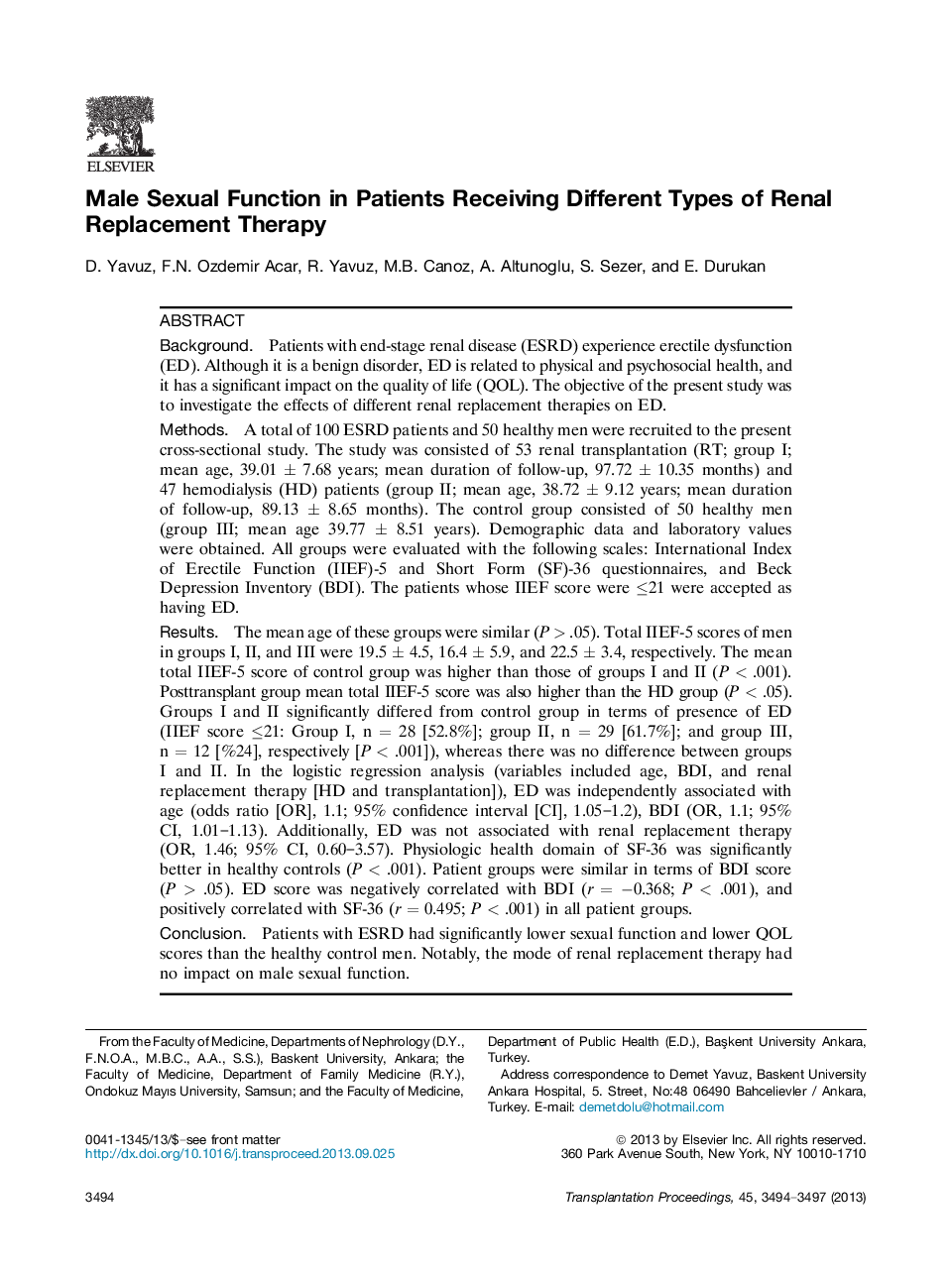| Article ID | Journal | Published Year | Pages | File Type |
|---|---|---|---|---|
| 4256507 | Transplantation Proceedings | 2013 | 4 Pages |
BackgroundPatients with end-stage renal disease (ESRD) experience erectile dysfunction (ED). Although it is a benign disorder, ED is related to physical and psychosocial health, and it has a significant impact on the quality of life (QOL). The objective of the present study was to investigate the effects of different renal replacement therapies on ED.MethodsA total of 100 ESRD patients and 50 healthy men were recruited to the present cross-sectional study. The study was consisted of 53 renal transplantation (RT; group I; mean age, 39.01 ± 7.68 years; mean duration of follow-up, 97.72 ± 10.35 months) and 47 hemodialysis (HD) patients (group II; mean age, 38.72 ± 9.12 years; mean duration of follow-up, 89.13 ± 8.65 months). The control group consisted of 50 healthy men (group III; mean age 39.77 ± 8.51 years). Demographic data and laboratory values were obtained. All groups were evaluated with the following scales: International Index of Erectile Function (IIEF)-5 and Short Form (SF)-36 questionnaires, and Beck Depression Inventory (BDI). The patients whose IIEF score were ≤21 were accepted as having ED.ResultsThe mean age of these groups were similar (P > .05). Total IIEF-5 scores of men in groups I, II, and III were 19.5 ± 4.5, 16.4 ± 5.9, and 22.5 ± 3.4, respectively. The mean total IIEF-5 score of control group was higher than those of groups I and II (P < .001). Posttransplant group mean total IIEF-5 score was also higher than the HD group (P < .05). Groups I and II significantly differed from control group in terms of presence of ED (IIEF score ≤21: Group I, n = 28 [52.8%]; group II, n = 29 [61.7%]; and group III, n = 12 [%24], respectively [P < .001]), whereas there was no difference between groups I and II. In the logistic regression analysis (variables included age, BDI, and renal replacement therapy [HD and transplantation]), ED was independently associated with age (odds ratio [OR], 1.1; 95% confidence interval [CI], 1.05–1.2), BDI (OR, 1.1; 95% CI, 1.01–1.13). Additionally, ED was not associated with renal replacement therapy (OR, 1.46; 95% CI, 0.60–3.57). Physiologic health domain of SF-36 was significantly better in healthy controls (P < .001). Patient groups were similar in terms of BDI score (P > .05). ED score was negatively correlated with BDI (r = −0.368; P < .001), and positively correlated with SF-36 (r = 0.495; P < .001) in all patient groups.ConclusionPatients with ESRD had significantly lower sexual function and lower QOL scores than the healthy control men. Notably, the mode of renal replacement therapy had no impact on male sexual function.
